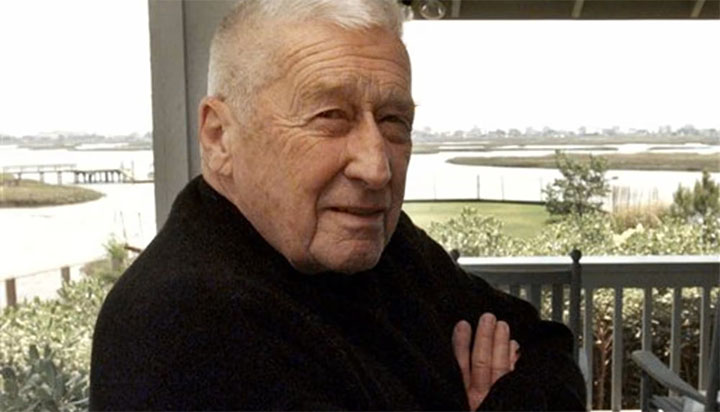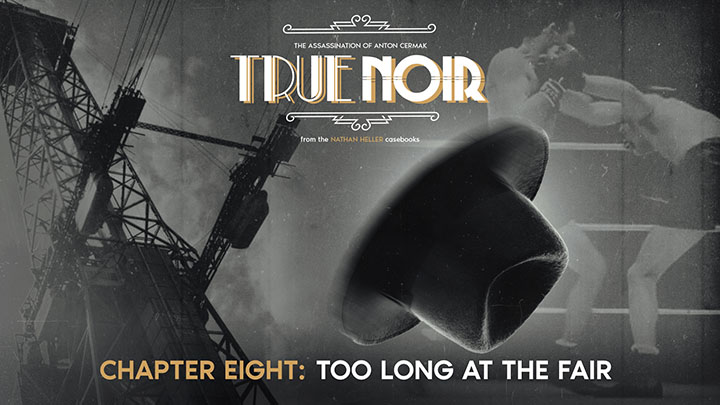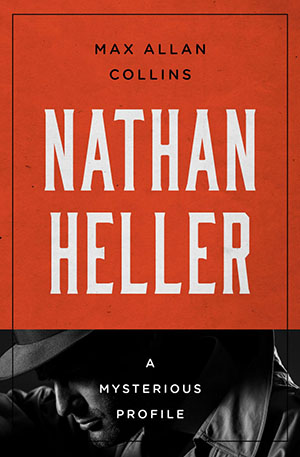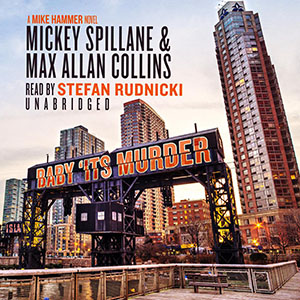I am in the midst of a project (the nature of which I’ll share here soon), so this will be a short update, at least on the news side.
It’s St. Patrick’s Day 2025 as I write this, and how better to celebrate that (sort of) holiday than to share with you this nice article on Mickey Spillane from Casa Carlini. I rate a single mention – not exactly accurate – but that doesn’t take away from what a nice piece this is…even I do wish there’d been mention of the current Baby, It’s Murder, the final Hammer novel of the fifteen books I’ve fashioned from partial manuscripts and synopses entrusted to me by Mickey himself in his final days.

The Legacy of Mickey Spillane
Mickey Spillane, the literary titan of hard-boiled crime fiction, left an indelible mark on the world of detective stories. His name is synonymous with gritty narratives, tough-as-nails protagonists, and a writing style that punches you in the gut. But Spillane’s legacy is more than just a collection of thrilling tales—it’s a testament to the enduring appeal of raw, unfiltered storytelling. In this deep dive, we’ll explore the man behind the typewriter, the cultural impact of his work, and why his stories continue to captivate readers decades later.
The Man Behind the Mike Hammer Mysteries
Mickey Spillane, born Frank Morrison Spillane in 1918, was a man who lived as boldly as the characters he created. Before he became a literary sensation, Spillane dabbled in various careers, including as a circus performer and a fighter pilot trainee during World War II. But it was his foray into writing that cemented his place in history.
Spillane’s breakout character, Mike Hammer, debuted in I, the Jury (1947), a novel that set the tone for his signature style. Hammer wasn’t your typical detective—he was a vengeful, no-nonsense antihero who operated by his own moral code. Spillane’s writing was fast-paced, visceral, and unapologetically violent, a stark contrast to the more polished detective fiction of the time.
The Hard-Boiled Revolution
Spillane didn’t just write crime novels; he revolutionized the genre. His work was a departure from the cerebral whodunits of Agatha Christie or the suave sophistication of Raymond Chandler’s Philip Marlowe. Instead, Spillane’s stories were raw, emotional, and often controversial. He didn’t shy away from depicting the darker side of human nature, and his protagonists were flawed, complex, and deeply relatable.
The term “hard-boiled” perfectly encapsulates Spillane’s approach. His stories were tough, gritty, and unflinching, much like the detectives who populated them. Mike Hammer wasn’t just solving crimes—he was navigating a world of corruption, betrayal, and moral ambiguity. This realism resonated with readers, making Spillane one of the best-selling authors of the 20th century.
Controversy and Criticism: Love Him or Hate Him
Spillane’s work wasn’t without its detractors. Critics often dismissed his novels as overly violent, misogynistic, or sensationalistic. Some accused him of prioritizing shock value over literary merit. But Spillane didn’t care. He famously quipped, “I don’t have fans. I have customers.” His focus was on entertaining his readers, not winning over the literary elite.
Despite the criticism, Spillane’s influence on the crime fiction genre is undeniable. His work paved the way for later authors like Elmore Leonard, James Ellroy, and even modern-day thriller writers. He proved that crime fiction could be both commercially successful and culturally significant.
Mike Hammer: The Antihero We Can’t Forget
At the heart of Spillane’s success was Mike Hammer, the quintessential hard-boiled detective. Hammer was a man of contradictions—brutal yet compassionate, cynical yet idealistic. He wasn’t afraid to bend the rules (or break them) to achieve justice, and his relentless pursuit of the truth made him a compelling character.
Hammer’s popularity extended beyond the pages of Spillane’s novels. He became a cultural icon, appearing in films, television shows, and comic strips. Actors like Darren McGavin and Stacy Keach brought Hammer to life on screen, each adding their own interpretation to the character. Even today, Mike Hammer remains a symbol of the hard-boiled detective archetype.
Spillane’s Writing Style: Punchy, Provocative, and Unforgettable
One of the hallmarks of Spillane’s writing was his ability to grab readers from the very first sentence. His openings were often explosive, setting the tone for the rest of the story. For example, the first line of I, the Jury is iconic: “I shook hands with the man whose brother I’d killed.” It’s a masterclass in hooking the reader and establishing the stakes.
Spillane’s prose was lean and mean, with no room for unnecessary flourishes. He had a knack for dialogue that crackled with tension and descriptions that painted vivid pictures with just a few words. This economy of language made his stories fast-paced and immersive, keeping readers on the edge of their seats.
The Cultural Impact of Mickey Spillane
Spillane’s influence extends far beyond the world of literature. His work helped shape the cultural landscape of mid-20th century America, reflecting the anxieties and complexities of the post-war era. The themes of his novels—corruption, justice, and the struggle between good and evil—resonated with a society grappling with rapid change.
Moreover, Spillane’s success demonstrated the power of genre fiction. At a time when literary snobbery often dismissed popular fiction as inferior, Spillane proved that genre writing could be both commercially viable and artistically significant. His legacy paved the way for future generations of genre authors to be taken seriously.
Spillane’s Later Years and Enduring Legacy
Even in his later years, Spillane remained a prolific writer. He continued to produce novels, short stories, and even comic books, proving that his creative spark never dimmed. In the 1990s, he collaborated with Max Allan Collins to complete several unfinished manuscripts, ensuring that his work would continue to reach new audiences.
NOTE FROM M.A.C.: Mickey and I did projects during his later years, from the Mike Danger comic book to numerous co-edited anthologies. The unfinished manuscripts were addressed after his passing, and represent posthumous works with considerable Spillane content.
Why Mickey Spillane Still Matters Today
In an age of complex antiheroes and morally ambiguous narratives, Mickey Spillane’s work feels more relevant than ever. His stories remind us that the line between right and wrong isn’t always clear, and that justice often comes at a cost. Mike Hammer may not be a traditional hero, but his unwavering commitment to his own code of ethics makes him a compelling figure.
Spillane’s writing also serves as a reminder of the power of storytelling. In a world saturated with content, his novels stand out for their raw emotion, gripping plots, and unforgettable characters. They remind us why we fell in live with crime fiction in the first place.
A Hard-Boiled Legend
Mickey Spillane was more than just a writer—he was a cultural force. His work redefined the crime fiction genre, introduced us to one of literature’s most iconic detectives, and proved that storytelling doesn’t need to be polished to be powerful. Whether you love him or hate him, there’s no denying the impact of Mickey Spillane.
So, the next time you pick up a gritty crime novel or watch a noir film, take a moment to appreciate the man who helped make it all possible. Mickey Spillane may have been hard-boiled, but his legacy is anything but forgettable.
J. Kingston Pierce at the indispensable Rap Sheet recommends Baby, It’s Murder as one of the most interesting of recent mystery novels. He also provides a link to Borg’s splendid review of the book, if you missed it.
A very good look at Road to Perdition (primarily the film version) is here.

Director Robert Meyer Burnett’s eighth episode of True Noir: The Assassination of Mayor Cermak has just dropped, and it’s a banger, as Rob himself might say. Probably the most impressive episode in terms of sound design if nothing else. And we’re in the home stretch now! Two episodes to go….
M.A.C.

















